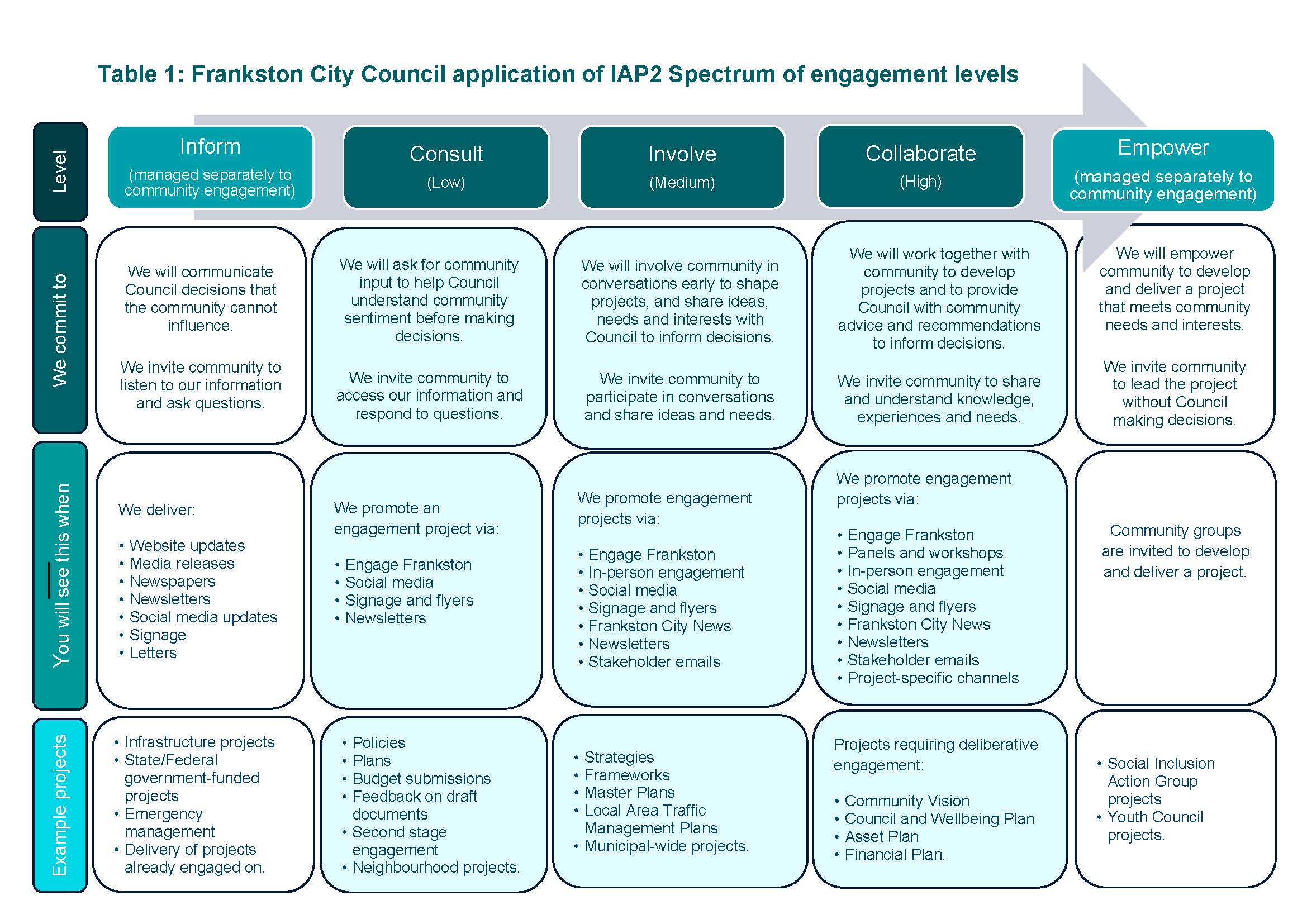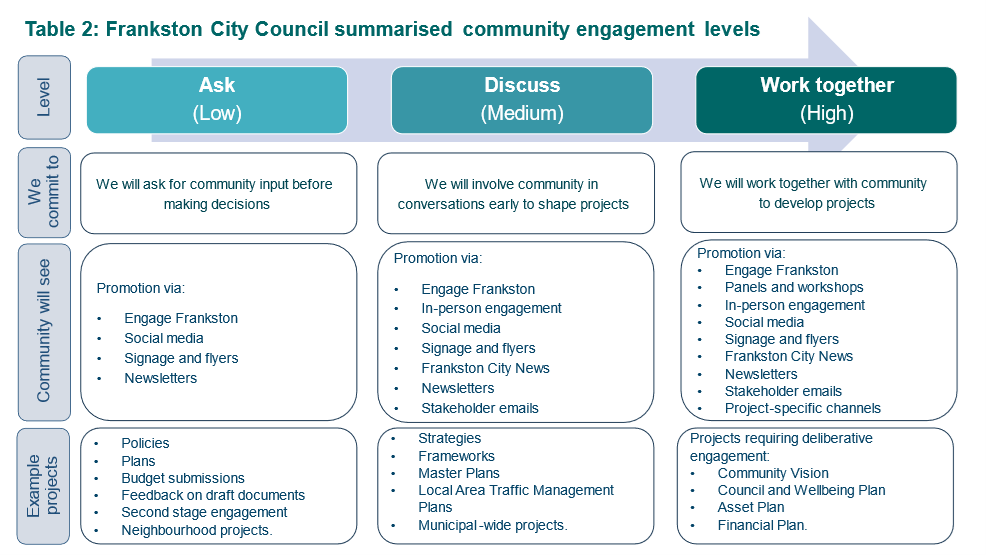Community engagement IS
- Based on the principle that people have a right to be involved in the decisions that affect their lives.[1]
- Giving every resident the opportunity to have a say on local priorities and the future of our community.
[1] International Association for Public Participation (IAP2): Core Value #1.










